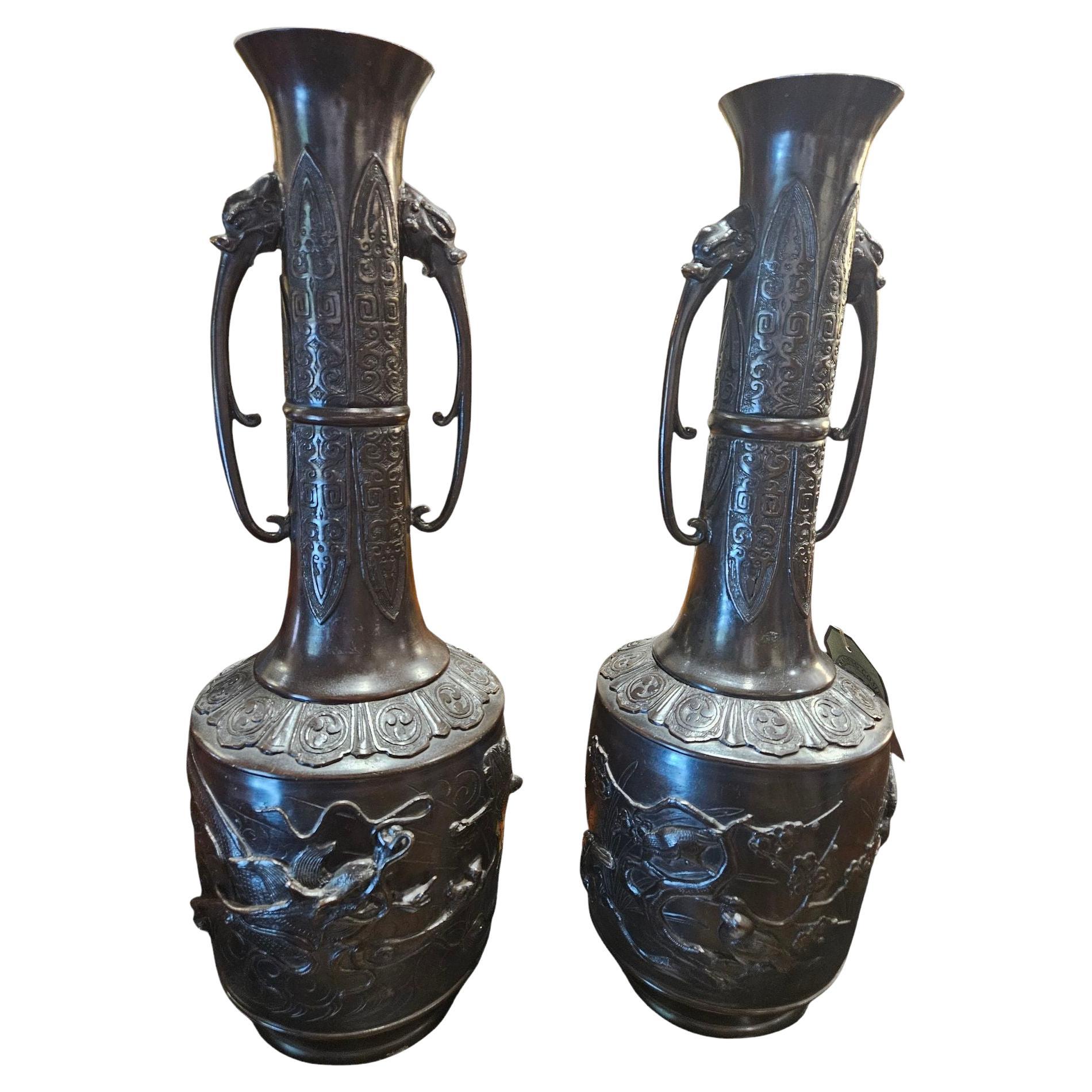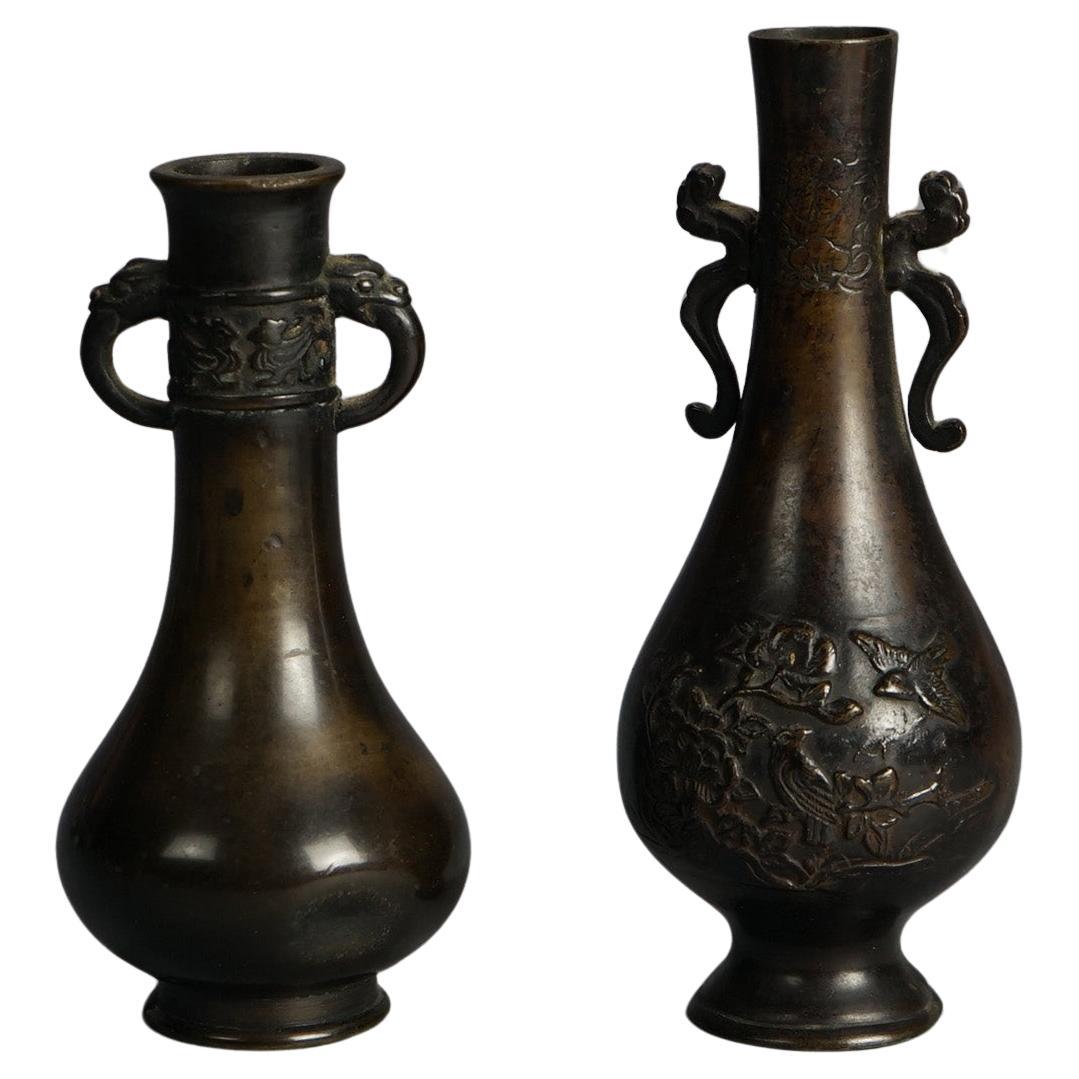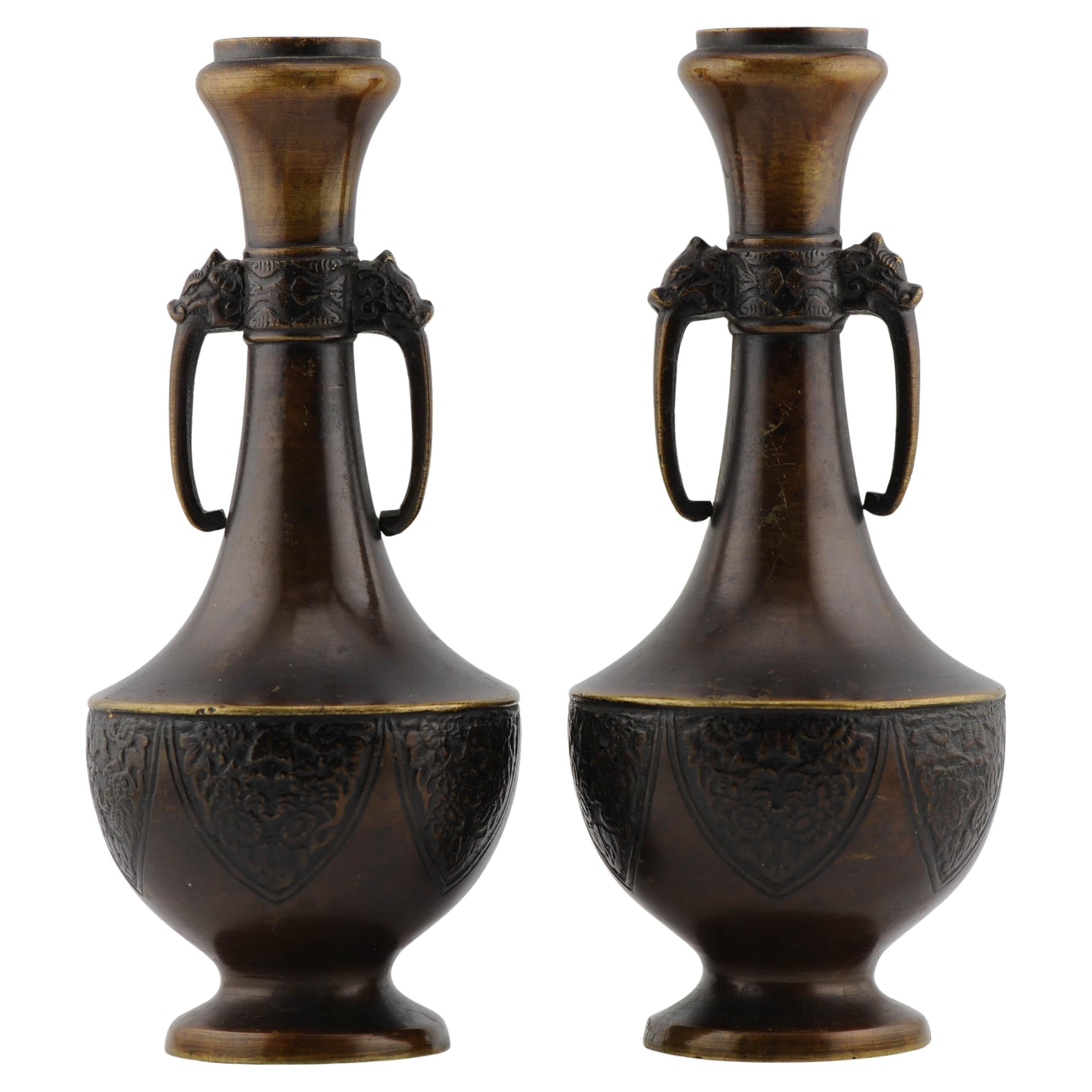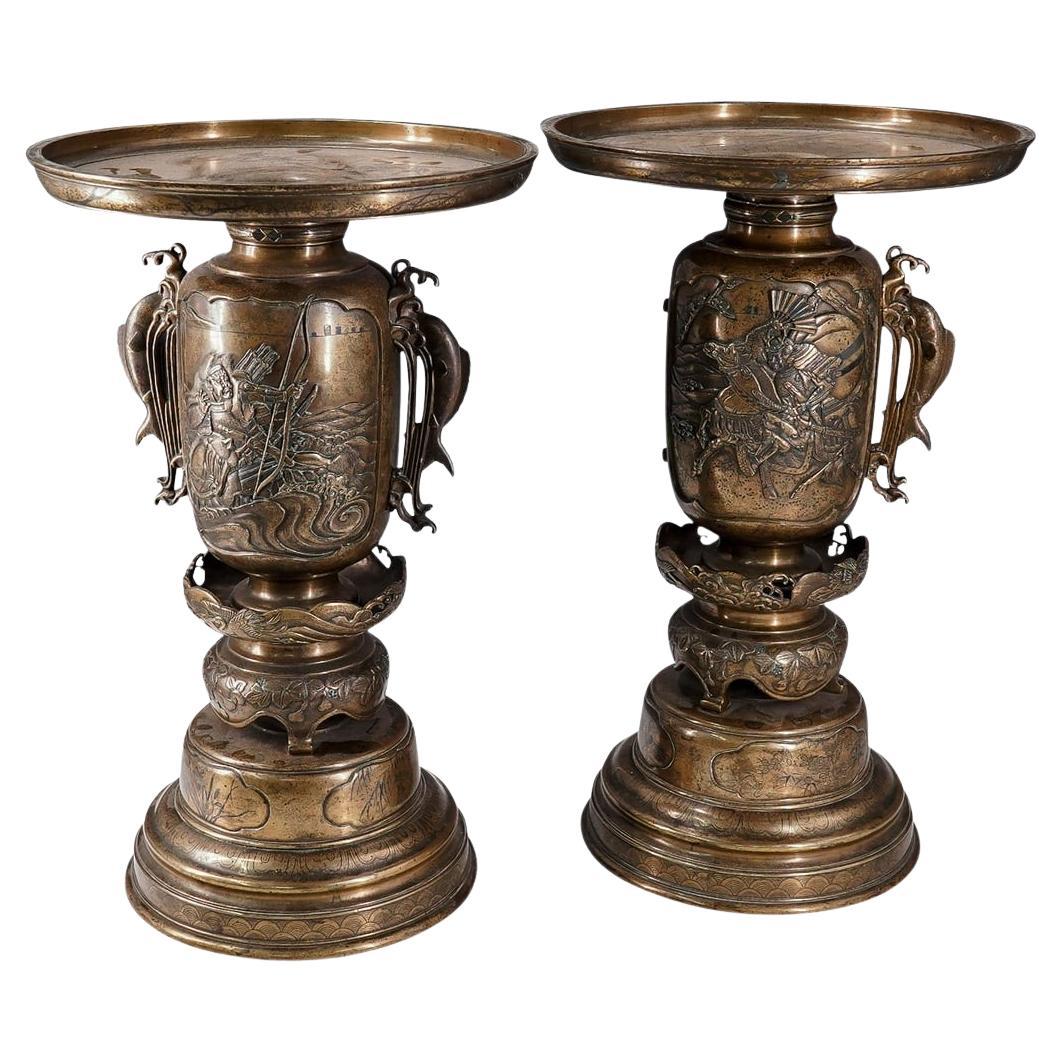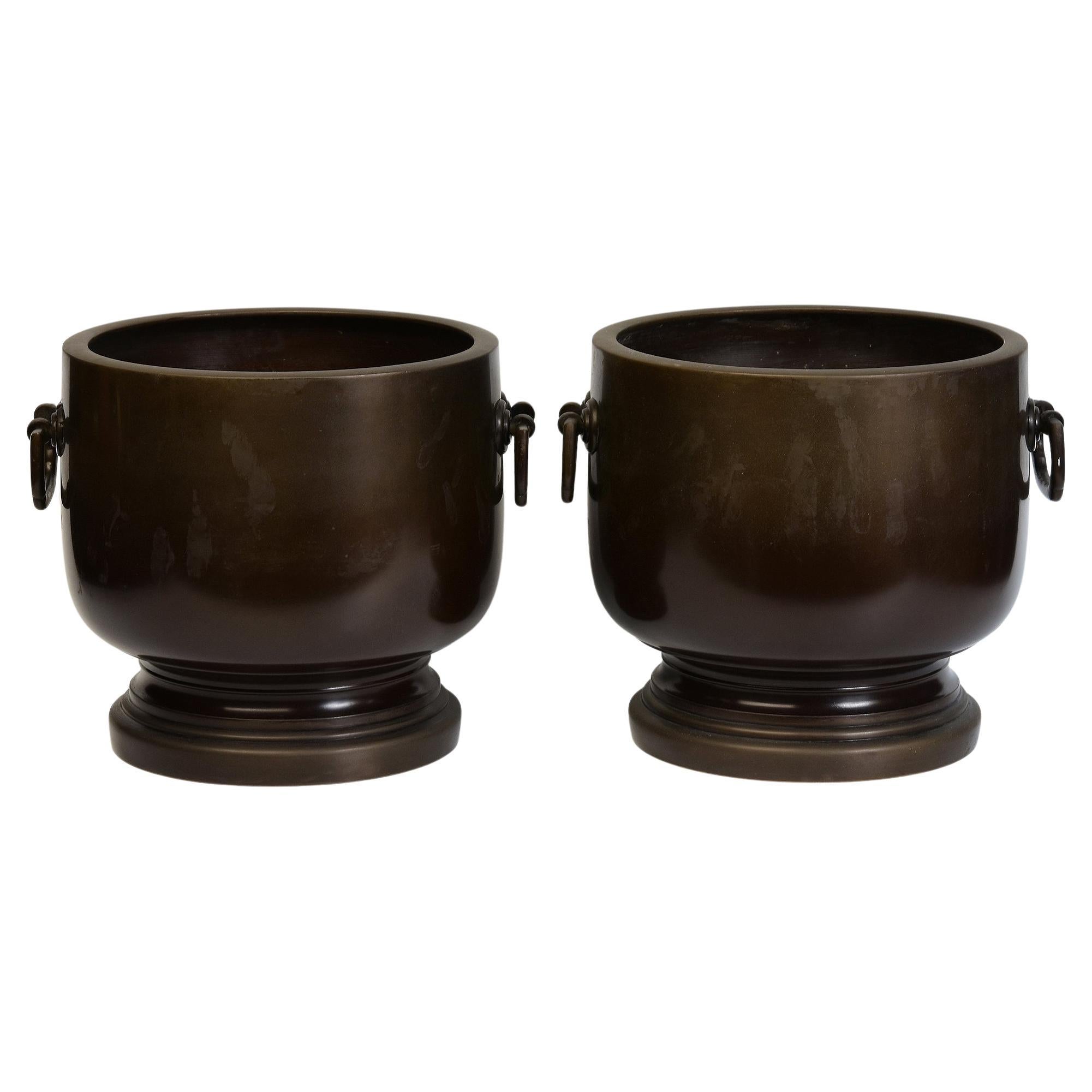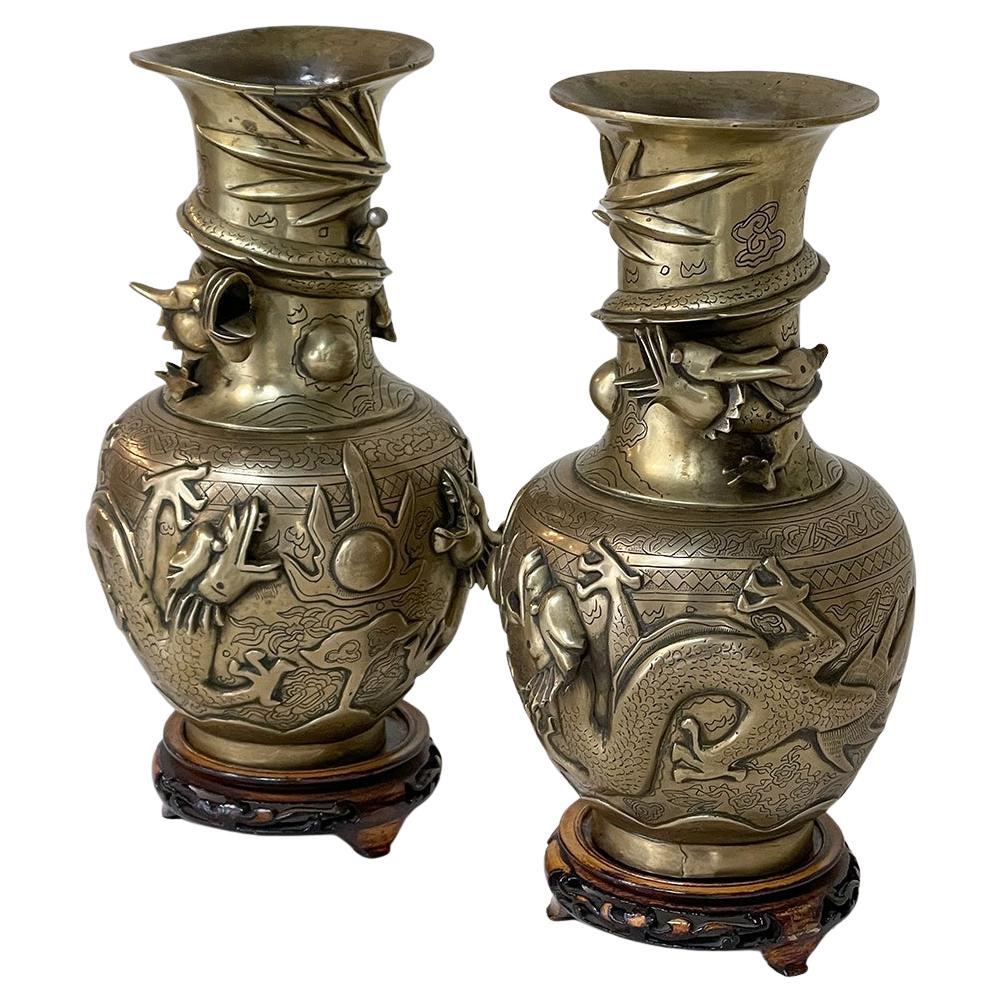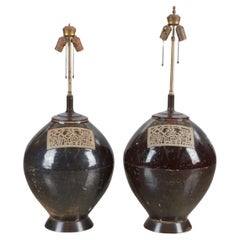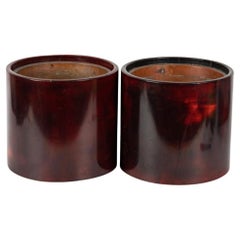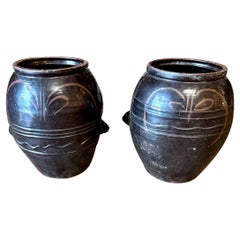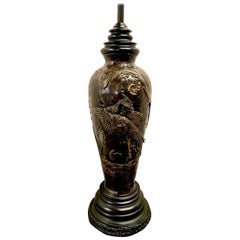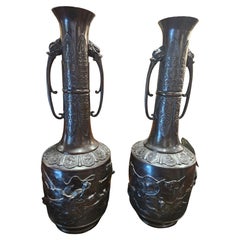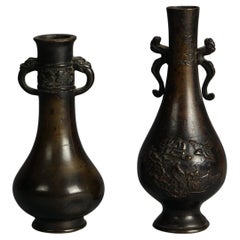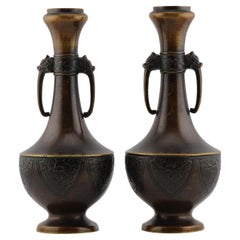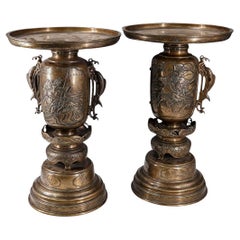Items Similar to Pair Japanese Choshi Sake Ewers
Want more images or videos?
Request additional images or videos from the seller
1 of 11
Pair Japanese Choshi Sake Ewers
$1,675per set
£1,258.31per set
€1,451.03per set
CA$2,324.28per set
A$2,582.79per set
CHF 1,353.41per set
MX$31,673.30per set
NOK 17,261.94per set
SEK 16,239.40per set
DKK 10,829.89per set
Shipping
Retrieving quote...The 1stDibs Promise:
Authenticity Guarantee,
Money-Back Guarantee,
24-Hour Cancellation
About the Item
This is a wonderful pair of 19th century Octagonal Choshi or Sake Ewers that was created during the late Edo or Meiji Period. The Choshi are composed of an Octagonal finely cast iron kettle with and open end spout which differentiates them from the traditional Japanese tea kettle.The body of the Choshi is finely cast with raised shell, wave and chrysanthemum detailing. The brass handle is attached to the body by brass chrysanthemum knobs and small raised iron chrysanthemum holders. The brass lid surmounted by a tiny brass chrysanthemum finial; the kettle is raised on three tiny cast iron feet. Both Choshi are in overall very good condition and retain their wonder natural patina. One finial is slightly bent and loose.
- Dimensions:Height: 7 in (17.78 cm)Width: 8 in (20.32 cm)Depth: 6.5 in (16.51 cm)
- Sold As:Set of 2
- Style:Edo (Of the Period)
- Materials and Techniques:
- Place of Origin:
- Period:
- Date of Manufacture:c. 1860 - 1880
- Condition:Wear consistent with age and use. Overall very good condition with one loose finial to brass lid.
- Seller Location:Pasadena, CA
- Reference Number:Seller: mjhdesignarts.02.20.241stDibs: LU2519338776922
About the Seller
5.0
Platinum Seller
Premium sellers with a 4.7+ rating and 24-hour response times
Established in 1993
1stDibs seller since 2017
255 sales on 1stDibs
Typical response time: <1 hour
- ShippingRetrieving quote...Shipping from: Pasadena, CA
- Return Policy
Authenticity Guarantee
In the unlikely event there’s an issue with an item’s authenticity, contact us within 1 year for a full refund. DetailsMoney-Back Guarantee
If your item is not as described, is damaged in transit, or does not arrive, contact us within 7 days for a full refund. Details24-Hour Cancellation
You have a 24-hour grace period in which to reconsider your purchase, with no questions asked.Vetted Professional Sellers
Our world-class sellers must adhere to strict standards for service and quality, maintaining the integrity of our listings.Price-Match Guarantee
If you find that a seller listed the same item for a lower price elsewhere, we’ll match it.Trusted Global Delivery
Our best-in-class carrier network provides specialized shipping options worldwide, including custom delivery.More From This Seller
View AllPair Japanese 19th Century Ceramic Storage Jar Lamps, Billy Haines Attributed
Located in Pasadena, CA
This is an unusual pair of lamps that have been created with antique 19th century Japanese storage jars and are attributed to Billy Haines. The ru...
Category
Antique Late 19th Century Chinese Chinese Export Table Lamps
Materials
Brass
Pair Japanese Lacquer Habachi
Located in Pasadena, CA
This is a beautiful example of the perfection of Japanese Minimalism design that dates to the Showa or possibly Taisho era. The simplicity of the circular form and minimal decoration...
Category
20th Century Japanese Showa Lacquer
Materials
Copper
$1,400 Sale Price / set
20% Off
Pair 19th Century Martaban Storage Jars
Located in Pasadena, CA
This is a classic near pair of 19th century Japanese storage jars. The jars are decorated with a stylized mask, raised waves and mid-point carrying handles.
Both jars are in good used condition with great natural patina. The jars have a zen sensibility and would integrate into multiple interior designs from modern to Renaissance inspired. We have several other Japanese and Chinese antique storage jars...
Category
Antique Late 19th Century Japanese Anglo-Japanese Ceramics
Materials
Stoneware
$1,450 / set
Japanese Bronze Lamp, 19th c.
Located in Pasadena, CA
This is an outstanding example of a large Japanese Meiji period bronze vase now mounted as a lamp. The vase is cast with high relief and finely detailed cockerels and flaming pearls....
Category
Antique Late 19th Century Japanese Meiji Vases
Materials
Bronze, Brass
$775 Sale Price
72% Off
Chinese Storage Vessel, 19th Century
Located in Pasadena, CA
These are impressive black glazed Chinese Late Qing Stoneware Storage Jars that would be at home in an Axel Vervoordt-style designed space. Both Jars are hand thrown with a thick bla...
Category
Antique 19th Century Chinese Chinese Export Ceramics
Materials
Stoneware
Pair Chinese Garden Seats, Mid-20th Century
Located in Pasadena, CA
This is a pair of Sancai pottery classic garden seats featuring high relief tigers and pine trees as their primary decoration. The two-color Sancai glazing is uncommon in garden seat...
Category
Mid-20th Century Chinese Chinoiserie Furniture
Materials
Ceramic
You May Also Like
Nice Pair of C19th Japanese Bronze Vases (Meji Period)
Located in London, GB
A very Fine Pair of Japanese Two Handled Vases
Meji Period C1890
Very Decorative
Category
Antique Late 19th Century Japanese Anglo-Japanese Vases
Materials
Bronze
Pair of Antique Japanese Meiji Double Handled Cast Bronze Vases C1920
Located in Big Flats, NY
Pair of Antique Japanese Meiji Double Handled Cast Bronze Vases C1920
Measures - 6.5"H x 2.5"W x 3"D (floral)
5.75"H x 2.5"W x 2.5"D
Category
Early 20th Century Japanese Metalwork
Materials
Bronze
$280 Sale Price / set
20% Off
Pair Antique Edo/Meiji 19th c Vases Bronze Japanese Heavy elephant ears
Located in Amsterdam, Noord Holland
Nicely made and carved pair of Bronze vases.
Condition
just some ware and some small scratches/dents. As pictures Size: 16CM high
Period
19th century
Category
Antique 19th Century Japanese Meiji Metalwork
Materials
Porcelain
Pair 19th Century Meiji Japanese Usabata Ikebana Bronze Vases
Located in New York, NY
Pair of antique (late 19th century) Meiji period Japanese usabata ikebana vases crafted in four sections and measuring an impressive 18 3/4 inches tall. Each with cartouches depicti...
Category
Antique Late 19th Century Japanese Meiji Metalwork
Materials
Bronze
Early 20th C., Showa, A Pair of Antique Japanese Old Bronze Hibachi Brazier Pots
Located in Sampantawong, TH
A pair of Antique Japanese old bronze Hibachi brazier pots.
Hibachi is a traditional Japanese heating device.
Age: Japan, Showa Period, Early 20th Century
Size: Height 26.4 C.M. / ...
Category
Early 20th Century Japanese Antiquities
Materials
Bronze
$1,280 Sale Price / set
20% Off
Pair Antique Japanese Bronze Vases on Wood Stands
Located in Dallas, TX
Pair Antique Japanese bronze vases on wood stands are ideal for adding beautiful symmetry with the magic of the Orient! Encircled with thr...
Category
Early 20th Century Japanese Meiji Vases
Materials
Bronze
